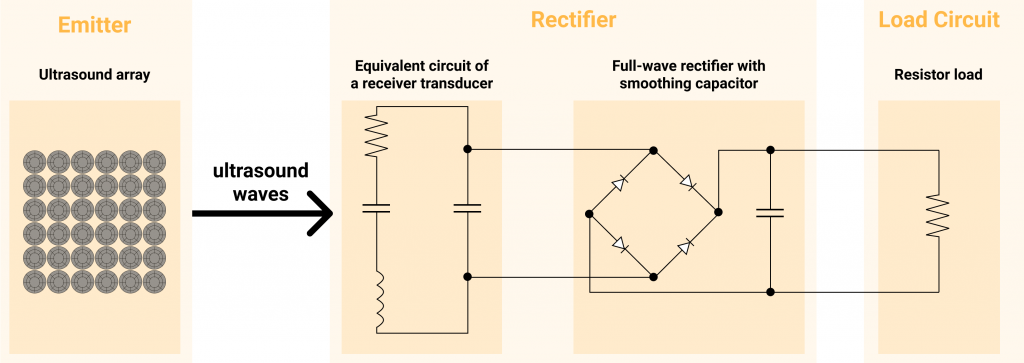Overview
Wireless power transfer creates new opportunities for interaction with tangible and wearable devices, by freeing designers from the constraints of an integrated power source. In a paper published at the 15th ACM International Conference on Tangible, Embedded, and Embodied Interaction (TEI ’21), we explored the use of focused ultrasound as a means of transferring power to a distal tangible device. We call this UltraPower. This has the radical effect of transforming passive props into dynamic active objects.

We analysed the ability to transfer power from an ultrasound array commonly used for mid-air haptic feedback and investigated the practical challenges of ultrasonic power transfer (e.g., receiving and rectifying energy from sound waves).
We also explored the ability to power electronic components and multimodal actuators such as lights, speakers and motors. In the paper, we described numerous exemplar wearable and tangible device prototypes that are activated by UltraPower, illustrating the potential applications of this novel technology.
UltraPower: Powering Tangible & Wearable Devices with Focused Ultrasound
R. Morales Gonzalez, A. Marzo, E. Freeman, W. Frier, and O. Georgiou.
In Proceedings of the Fifteenth International Conference on Tangible, Embedded, and Embodied Interaction – TEI ’21, Article 1. 2021.
@inproceedings{TEI2021,
author = {Morales Gonzalez, Rafael and Marzo, Asier and Freeman, Euan and Frier, William and Georgiou, Orestis},
booktitle = {{Proceedings of the Fifteenth International Conference on Tangible, Embedded, and Embodied Interaction - TEI '21}},
title = {{UltraPower: Powering Tangible & Wearable Devices with Focused Ultrasound}},
year = {2021},
publisher = {ACM},
pages = {Article 1},
doi = {10.1145/3430524.3440620},
pdf = {http://research.euanfreeman.co.uk/papers/TEI_2021.pdf},
url = {http://euanfreeman.co.uk/ultrapower-powering-tangible-wearable-devices-with-focused-ultrasound/},
}

